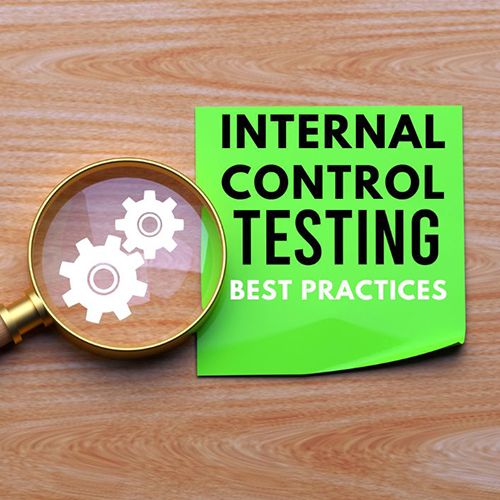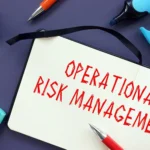This blog highlights the importance of internal control testing in banks and financial institutions, focusing on mitigating risks, ensuring regulatory compliance, and optimizing operational efficiency. It outlines the best practices for effective control testing, including understanding the control environment, developing a testing plan, and continuous monitoring. By following these practices, institutions can strengthen their internal controls and build a risk-resilient ecosystem.
Control testing assists banks and financial institutions to evaluate their internal controls, including corporate governance & accounting processes, to mitigate risks, meet regulatory compliance, detect and prevent fraud, and optimize operational efficiency.
According to the Committee of Sponsoring Organization of Treadway Commission (COSO), “internal control is a process, effected by an entity’s board of directors, management and other personnel, designed to provide reasonable assurance regarding the achievement of objectives.”
With a thorough and effective assessment of the internal controls, procedures, and processes, banks can identify risks, remediate them, and establish a robust and risk-resilient ecosystem.
Purpose of Internal Control Testing
- Evaluate the effectiveness and efficacy of internal controls
- Identify, assess, and remediate control weaknesses and vulnerabilities
- Improve risk control and process performance
- Strengthen trust among all stakeholders
- Improve accountability and reduce errors
- Improve operations and reporting
Suggested Read: The Role of Control Testing in Mitigating Enterprise Risks in Banking
10 Best Practices for Internal Control Testing in Banks
Here are the 10 key “internal control testing” best practices banks and financial institutions can implement to protect their business, assets, and clients.
1. Comprehend the Internal Control Environment
A thorough understanding of the current internal controls and process environment is critical, which includes –
- Familiarizing with control activities
- Understanding the organizational structure
- Reviewing policies and procedures
- Evaluating risk assessment processes
- Assessing communication channels
- Monitoring control activities and processes
2. Document the Control Structure
Create detailed documentation of the control structure, including –
- Control objectives
- Control procedures
- Control deficiencies
This documentation will serve as a reference point during the testing process.
3. Develop a Testing Plan
Prepare a comprehensive testing plan that outlines the following elements:
- Test scope
- Objectives
- Methodologies
This testing plan should also include a schedule and resources required for the testing process.
4. Select Appropriate Testing Methods
Several methodologies are available for testing internal controls. These include:
- Walkthrough Testing
Traces transaction path, and identifies vulnerabilities. - Evaluate Key Controls
Tests critical controls, and prioritizes high-risk areas. - Compliance Control Testing
Assesses internal controls for compliance (AML/KYC & data privacy) - Risk-based Control Testing
Tests based on the possibility of risks & failure. - Data Analytics and Automated Testing
Helps detect patterns & identify anomalies in controls.
5. Risk-Based Approach
Control testing based on the risk-based approach requires banks to assess and determine high-risk areas and prioritize them in the scope. The purpose of a risk-based approach or RBA is to reduce and restrict the risk within acceptable levels, ensuring business continuity.
Suggested read: FATF Risk-Based Approach to Managing Financial Crime Compliance
6. Document the Testing Procedures
Document the steps taken during the control testing process, including,
- Test plans
- Tests performed
- Test results
- Any control deficiencies
- Remediation actions
This documentation should be detailed enough to allow future review and re-testing if required.
7. Evaluate the Effectiveness of Controls
Assess the effectiveness of controls by comparing the test results against predetermined control objectives. Determine whether the controls are operating effectively and report any deficiencies or weaknesses.
8. Report and Communicate Findings
Communicate the findings clearly and persuasively to the management and board of directors. Prepare a comprehensive report containing detailed information on the testing results. It should include:
- Control deficiencies or weaknesses
- Recommendations to improve internal controls
9. Monitor Remediation Actions
Establish periodic updates for remediation efforts to track and monitor the progress of remediation actions taken to address the detected control deficiencies and vulnerabilities. This helps the organization to determine the effectiveness of the changes to internal controls, and address the risks.
10. Continuous Control Monitoring
Internal control testing should not be a one-time event. It should be complemented by continuous monitoring mechanisms, such as
- Automated alerts
- Exception reporting
These mechanisms help the organization –
- Identify control failures in real time
- Detect anomalies
- Determine suspicious patterns
- Increase visibility
- Enable rapid response
- Remediate timely
- Minimize the scope of failure

Conclusion
Control requirements change constantly due to new policies, industry standards, and regulations, necessitating continuous control testing and updates to mitigate risks.
Anaptyss offers control testing expertise to help banks and financial institutions implement and test internal controls and frameworks. Our expertise spans risk identification, design, testing, performance assessment, evaluation, and remediation. We also help banks address enterprise risk management (ERM) challenges due to limited resources, gaps in skills or expertise, regulatory shifts, technological constraints, and resistance to change.
Interested in learning more about the red flags for money laundering and ways to address them? Write to us: info@anaptyss.com.


















